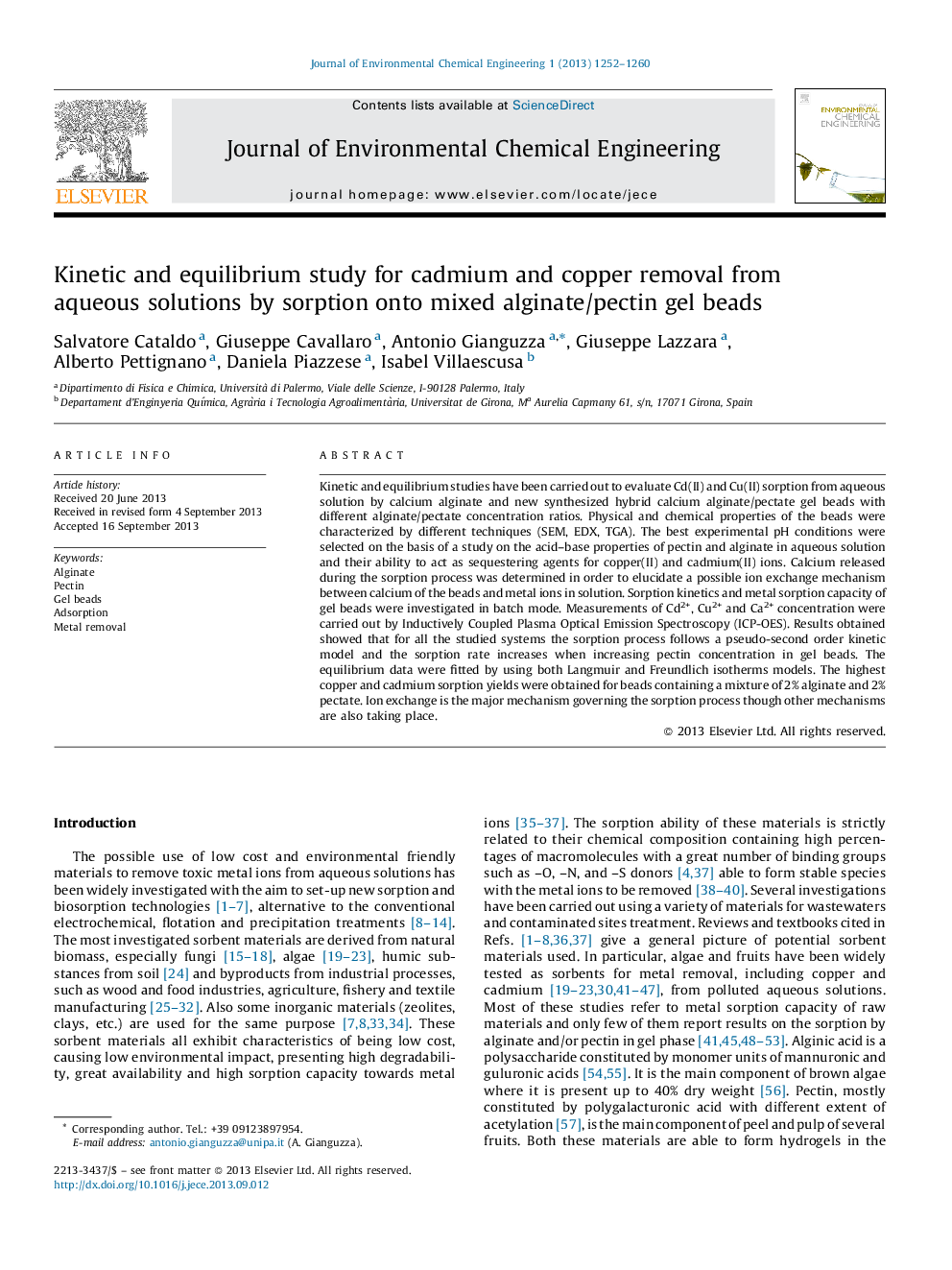| Article ID | Journal | Published Year | Pages | File Type |
|---|---|---|---|---|
| 222528 | Journal of Environmental Chemical Engineering | 2013 | 9 Pages |
Kinetic and equilibrium studies have been carried out to evaluate Cd(II) and Cu(II) sorption from aqueous solution by calcium alginate and new synthesized hybrid calcium alginate/pectate gel beads with different alginate/pectate concentration ratios. Physical and chemical properties of the beads were characterized by different techniques (SEM, EDX, TGA). The best experimental pH conditions were selected on the basis of a study on the acid–base properties of pectin and alginate in aqueous solution and their ability to act as sequestering agents for copper(II) and cadmium(II) ions. Calcium released during the sorption process was determined in order to elucidate a possible ion exchange mechanism between calcium of the beads and metal ions in solution. Sorption kinetics and metal sorption capacity of gel beads were investigated in batch mode. Measurements of Cd2+, Cu2+ and Ca2+ concentration were carried out by Inductively Coupled Plasma Optical Emission Spectroscopy (ICP-OES). Results obtained showed that for all the studied systems the sorption process follows a pseudo-second order kinetic model and the sorption rate increases when increasing pectin concentration in gel beads. The equilibrium data were fitted by using both Langmuir and Freundlich isotherms models. The highest copper and cadmium sorption yields were obtained for beads containing a mixture of 2% alginate and 2% pectate. Ion exchange is the major mechanism governing the sorption process though other mechanisms are also taking place.
